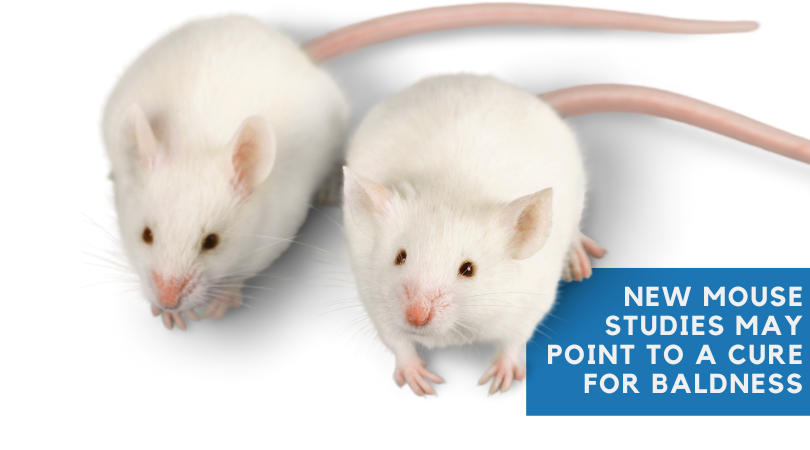New Mouse Studies May Point to a Cure for Baldness
Posted on
While much animal research is devoted to understanding bodily functions and finding treatments and cures for serious diseases and conditions, sometimes the target is a more everyday concern. Recent mouse studies have shed new light on hair loss and may point to possible treatments.
Prompting New Growth in Skin Follicles
A research team from Northwestern University has discovered a potential cause of baldness: stiff hair follicles.
Hair follicles, like joints, can stiffen with age, inhibiting hair growth. In experiments with mice, the researchers discovered a way to soften hair follicle stem cells by increasing the production of an RNA called miR-205.

When the scientists genetically manipulated stem cells to produce more miR-205 in both young and old mice, the mice began growing new hair within 10 days.
The next step is to determine whether a topical application of miR-205 will have the same effect in mice. If that test is successful, future experiments will investigate whether a topical application of miR-205 can stimulate hair growth in humans.
Hairy Moles May Hold the Secret to Hair Growth
A different study out of the University of California, Irvine, has found a potential cure for baldness in another source: hairy skin moles.
In investigating why some moles grow such long hairs, the team discovered that moles contain molecules that promote hair growth.
In mouse experiments, the research team demonstrated that a molecule called osteopontin, which is found in abundance in hairy skin moles, could prompt dormant hair follicle stem cells to start producing hair again.
To test the effectiveness of osteopontin in growing hair, the researchers grafted human skin samples onto mice, then gave the mice daily injections of osteopontin for three days. Within days, the mice grew new hairs at the injection sites.
The study has advantages over other mouse studies because it used human tissue. The team hopes its discovery could lead to an outpatient treatment for baldness involving injections of osteopontin.
AI Finds a New Compound to Fight Baldness
A third potential cure for baldness comes from Qingdao University of Science and Technology in China, which used artificial intelligence to predict chemical compounds that might work to fight hair loss.
The research team tested the AI suggestions and found one, a compound called MnPS3, that seemed most promising. They tested MnPS3 on mouse models of alopecia by delivering the compound through the skin via microneedling patches.
Within two weeks after treatment with MnPS3, the mice began growing thick, dense hair that filled in their bald spots. The treatment must now be tested in humans to see if it is similarly effective.